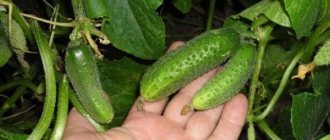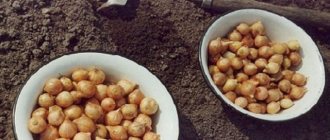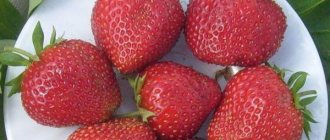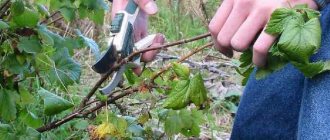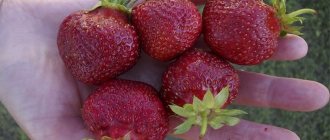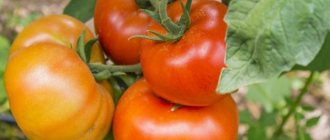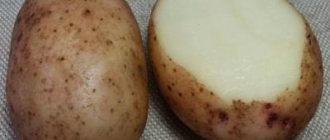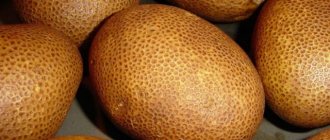Characteristics of potatoes Hostess
This type of potato was created in Siberia, by specialists from the Research Institute of Agriculture, by crossing two varieties Sante and Zarevo.
The period of full ripening is mid-season. The crop is dug up 80-100 days after planting. The productivity of the Hostess is quite high. 500-600 centners of potatoes are harvested from one hectare. The high starch content in the tubers (17-20%) made the variety ideal for making purees, but it is not very suitable for frying. The product does not darken during heat treatment.
The described type of root crops has good transportable properties and a long shelf life.
Bushes and roots
Potato bushes of the Khozyayushka variety grow of medium size, with an erect stem, about 50 cm high, and a small number of leaves. The foliage is dark green and has a medium wrinkled texture. This type of plant blooms with light purple, small flowers.
The number of root crops under one Hostess bush reaches 12-18 pieces with an average weight of 100-150 g. The tubers are oval-shaped, with a surface with a small eye. The peel is thin and pink. The inside of the potatoes is light cream in color.
Description
The most important thing when getting to know a new potato variety is the timing of its ripening. From the first shoots to the ripeness of the tubers, 70-75 days pass. After planting, seedlings are already visible within a week, if the soil is as prepared as possible and has the desired temperature. It is necessary to first prepare the planting material itself. Preparation is carried out through germination and vernalization.
Interesting! State tests gave the following yield indicators: in central Russia the average value is 330 centners per hectare, in the Vologda region 421 centners per hectare, the maximum indicators on the experimental field under the supervision of scientists are 767 centners per hectare.
By using intensive technologies, yields can be significantly increased. The variety has a good reserve. Breeders paid attention to development and good resistance to:
- nematode;
- late blight of tubers;
- potato cancer.
That is why the Hostess is recommended for planting in the North-West of Russia, where the above-listed potato lesions and diseases are most common.
Pros and cons of the variety
The Khozyayushka variety has many advantages, which explains its great demand among gardeners.
pros
- Unpretentiousness to growing conditions.
- Excellent taste.
- The productivity of the variety is at a high level.
- Drought resistance.
- Good transportable properties.
- Long shelf life.
Minuses
Among the disadvantages of the Hostess potato, it is worth highlighting the following facts:
- Tubers are prone to cracking.
- Low resistance to late blight.
Advantages or disadvantages
The potato variety is one of the few species that can tolerate low and high temperatures. The fruits have good taste qualities that are not lost even during long-term storage. The characteristics of the variety indicate the following advantages of the crop:
- versatility, the ability to use fruits for making purees, soups or cooking whole;
- ability to tolerate temperature changes well;
- high yield rates;
- keeping quality of fruits without loss of external and taste qualities up to 90%, ability to be stored unchanged for six months;
- ability to withstand difficult transportation conditions.
Potatoes are not prone to darkening after cutting, so they are well suited for making mashed potatoes and chips. On an industrial scale, flour and starch are made from it. The disadvantage of the variety is considered to be insufficient resistance to certain types of potato diseases and frosts. When grown in unfavorable conditions, reviews from gardeners note a tendency to cracks and increased formation of small tubers.
See also
Description and fight against the click beetle (wireworm) on potatoesRead
Landing Features
The Hostess variety is planted following standard rules of agricultural technology. 2-3 weeks before planting in the ground, it is recommended to germinate the seed material. For this purpose, the seeds selected for planting are placed in boxes and left in a bright room with an air temperature of +14-15 degrees. Over the specified period of time, the sprouts on seed potato tubers will grow to a size of 1-2 cm.
Before planting, seed material of the Khozyayushka variety must be pickled in a weak solution of potassium permanganate to prevent the development of diseases.
Landing dates
The characteristics of climatic growing conditions play an important role in the timing of planting Khozyayushka potatoes. It is necessary to wait until the soil warms up to a temperature of at least +8 degrees. In central Russia, the planting date for this variety is early May. In colder conditions, planting is done a little later.
Site preparation
The Hostess potato prefers sunny places with light partial shade, so you should choose an appropriate area in the garden. The variety achieves its best yield on sandy, loamy soil. The best option would be fertile, loose black soil.
To improve soil fertility and enrich it with useful microelements, the site is prepared in the autumn. The following agrotechnical activities are carried out:
- completely remove weeds and their roots;
- dig deep into the soil;
- apply organic fertilizers.
For organic matter, rotted cow manure, humus or compost are suitable at a rate of 5-7 kg per 1 sq. m. meter. In the spring, before planting potatoes, the ground is dug up again. During planting, mineral fertilizers (potassium and phosphorus) are applied to each hole.
Planting scheme
The Hostess variety is planted according to the standard scheme:
- between pits – 30-35 cm;
- between rows – 60 cm;
- seed placement depth – 5-9 cm.
Care
Caring for Potatoes Hostess involves carrying out the following work:
- watering;
- mulching;
- loosening and hilling.
Watering
Potatoes of the Hostess variety do not need frequent watering. It will be enough to moisten the soil three times during the growing season. The first watering is carried out before flowering, when the bushes have grown more than 10 cm. The potatoes are watered a second time after flowering, moistening the soil to a depth of 50 cm. And the third time - when the variety has faded. In hot, dry weather conditions, you can add 2-3 more irrigations to the plantings.
Mulching
You can protect the plantings of the Hostess potato plants from weeds by mulching the beds. Grass clippings are used as mulch, which prevents the growth of weeds and retains moisture in the soil. The main characteristic of mulching is the simplification of crop care.
Hilling and loosening
The soil where the Khozyayushka variety grows should be loosened periodically to ensure free access of oxygen to the root system. Loosening the soil is carried out to a depth of 4-5 cm so as not to damage the roots of the plant.
Hilling up plants must be done twice a season. The plantings are earthed up when the tops reach a height of 15-20 cm. The next earthing is carried out in two to three weeks.
This agrotechnical technique allows you to protect potato bushes from pests and increase active growth, and, accordingly, productivity. Hilling up is done only with wet soil, after rain or watering.
Diseases and parasites
The Khozyayushka potato variety has low resistance to late blight and scab. Plants can also be attacked by a dangerous pest – the Colorado potato beetle.
Late blight
This disease is fungal. Potatoes of the Khozyayushka variety can be affected by this fungus when the plantings are highly moist, or when diseased tubers are used as seed material. Late blight can also occur with an excess of nitrogen fertilizers or a lack of potassium or phosphorus in the soil.
The disease affects potato tops and tubers. The foliage and stems curl and turn brown. Brown spots appear on the tubers and rot develops.
To prevent the disease, only selected seeds should be used, disinfected with an appropriate agent. Close attention must also be paid to the moisture content of plantings. Late blight cannot be cured in the later stages. Diseased plants should be removed from the garden and burned. In the early stages of the disease, potato bushes are treated with fungicidal preparations.
Scab
An infectious disease that can affect the Hostess potato is scab. It appears in the form of growths on potato tubers. Infection with this disease occurs mainly from the use of fresh manure as fertilizer or from old, diseased plants that were not removed from the site in the fall.
Scab can only be detected on potato tubers, since this disease does not affect bushes.
To prevent the development of the disease, chemicals are used that are sprayed onto the tubers before planting. Only rotted manure should be used, because fresh manure retains many bacteria that have passed through the gastrointestinal tract of animals.
Colorado beetle
A dangerous insect that can destroy the potato harvest. Hostess is the Colorado potato beetle. The pest appears in the spring, emerging from the soil to the surface or flying from a neighboring garden.
In small areas, Colorado potato beetles are collected by hand and then destroyed by soaking in kerosene. In large planting areas, potatoes of the Khozyayushka variety are subject to treatment with chemicals, the main characteristic of which is the destruction of dangerous insects on the plants.
Diseases and pests
The Hostess potato is afraid of fungal diseases such as common scab, late blight and black scab (rhizoctoniosis).
Common scab
It affects all potato varieties that have a thin shell. The disease rarely invades tops and roots. Externally, this fungus resembles dried small sores. Often, the fungus appears on small root crops, the size of which has barely reached 3 cm. The infested tuber has an ugly appearance and loses its taste.
Black scab
This fungus completely infects the crop. The development of shoots stops, which often leads to the death of the entire bush. The tubers are covered with small black spots that grow as the tuber develops. The best conditions for the progression of the disease are moisture and high temperature (above +18C).
Late blight
Late blight is the most dangerous disease due to its rapid spread. The fungus spreads by spores, allowing it to instantly invade healthy plants. Moisture is the most favorable condition for the spread of the disease.
Colorado beetle
This parasite loves to feast on the succulent leaves of the Hostess's tops. Invasion of larvae and adults can completely destroy the crop.
We recommend reading: “Description of the potato variety Spiridon”
Adults lay eggs in an orange shell on the back of the leaves of the tops. Then the voracious pink larvae appear and grow daily, increasing their appetite.
You can fight parasites either manually or using special chemicals.
